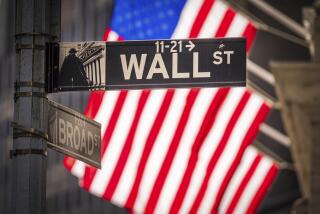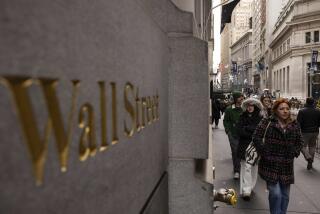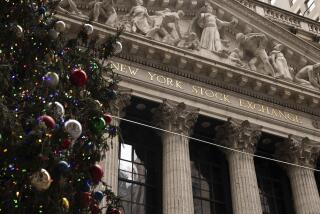Dow Quietly Drops 5.13; Traders Expect a Pause
NEW YORK — Stock prices drifted lower in quiet trading today, extending last week’s drop.
The Dow Jones average of 30 industrials, down more than 20 points at mid-session, closed with a 5.13 loss at 2,704.41.
The average fell 42.55 points last week.
Declining issues outnumbered advances by about 5 to 3 on the New York Stock Exchange, with 533 up, 934 down and 508 unchanged.
Big Board volume totaled 126.02 million shares, down from 154.09 million in the previous session.
The NYSE’s composite index lost .65 to 193.30.
Analysts said buying interest was limited, as it had been last week, by concern that the market is due for at least a pause after its sharp rise through the first eight months of the year.
There also has been much talk on Wall Street that the Federal Reserve will be reluctant to relax its credit policy any further over the next several weeks.
Fed policy makers are believed to be satisfied that the risks of a recession have been averted for now, given recent data that showed a stronger-than-expected pace of business activity.
Nevertheless, interest rates declined slightly in the bond market today, suggesting that traders believe that the economy has room to keep on expanding moderately without aggravating inflation or exerting any strong upward pressure on interest rates.
Bond prices drifted slightly higher this morning in slow dealings, with many traders content to stay on the sidelines until a series of economic reports are released later this week.
The Treasury’s benchmark 30-year bond was up 1/16 point, or 63 cents per $1,000 face amount, at midday. Its yield, which rises when prices fall, slipped to 8.07% from 8.08% late Friday.
“Trading has been very lethargic,” said Elliott Platt, a fixed-income researcher for Donaldson Lufkin & Jenrette Securities Corp.
The government plans to release a series of economic reports on Thursday and Friday, including August retail sales, the July trade deficit and August figures on wholesale prices, industrial production and factory use.
More to Read
Inside the business of entertainment
The Wide Shot brings you news, analysis and insights on everything from streaming wars to production — and what it all means for the future.
You may occasionally receive promotional content from the Los Angeles Times.










